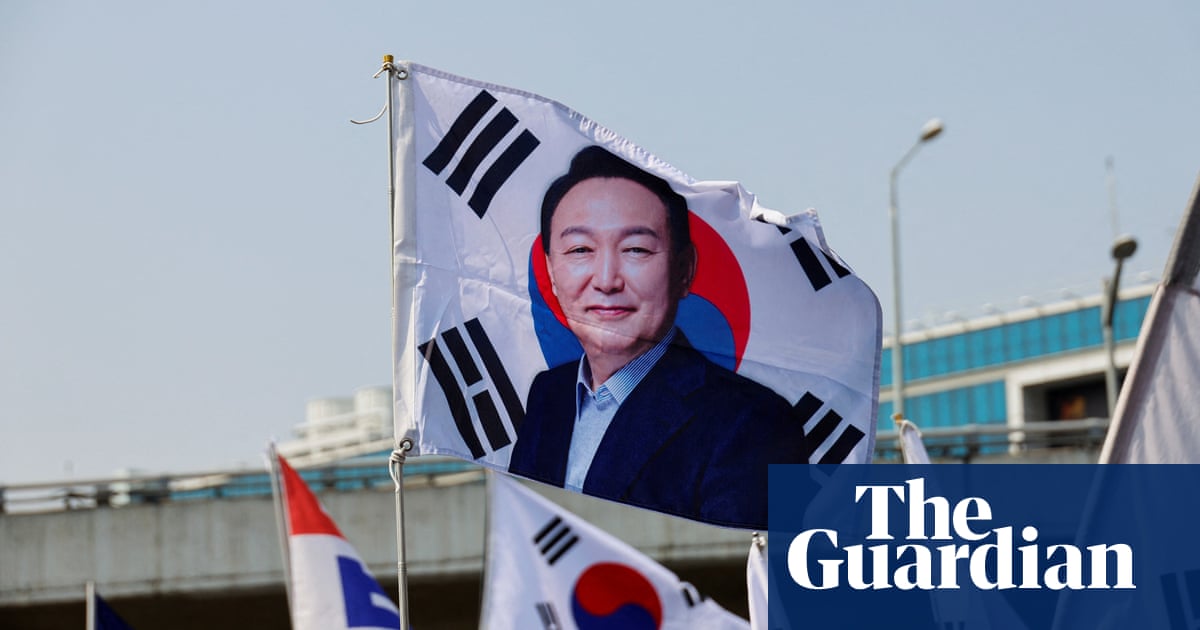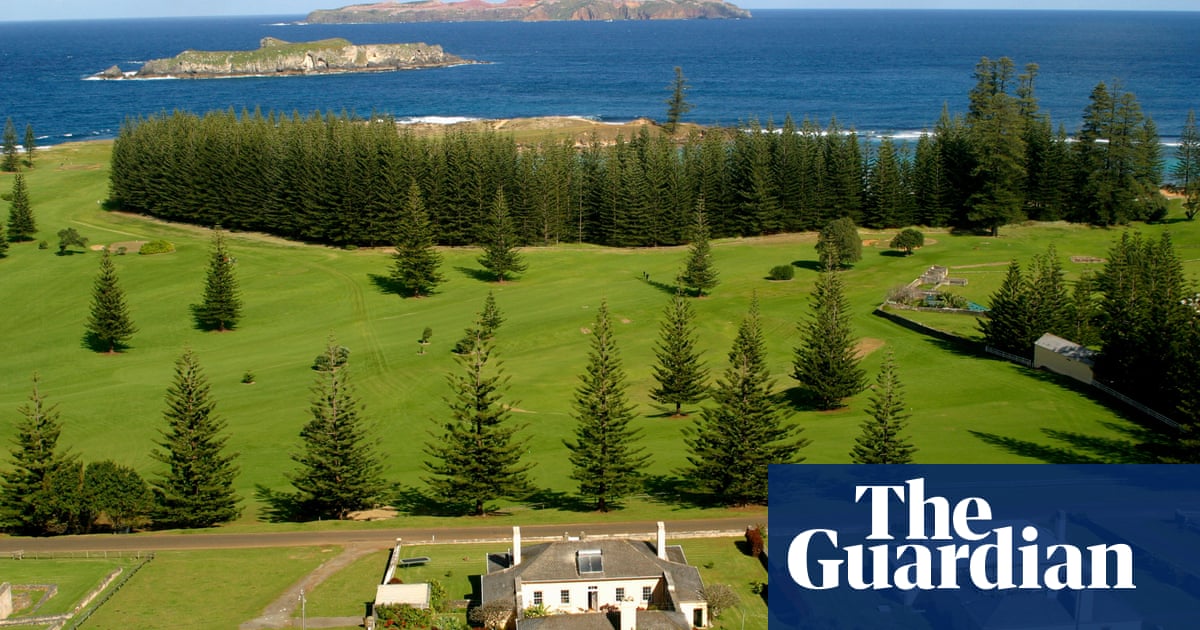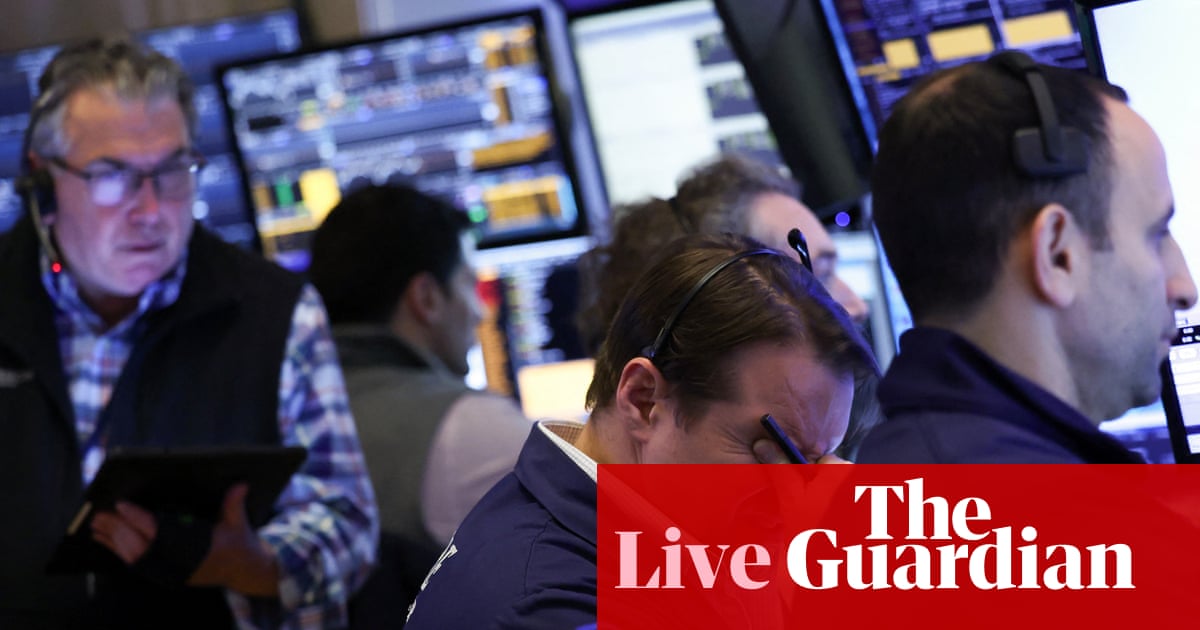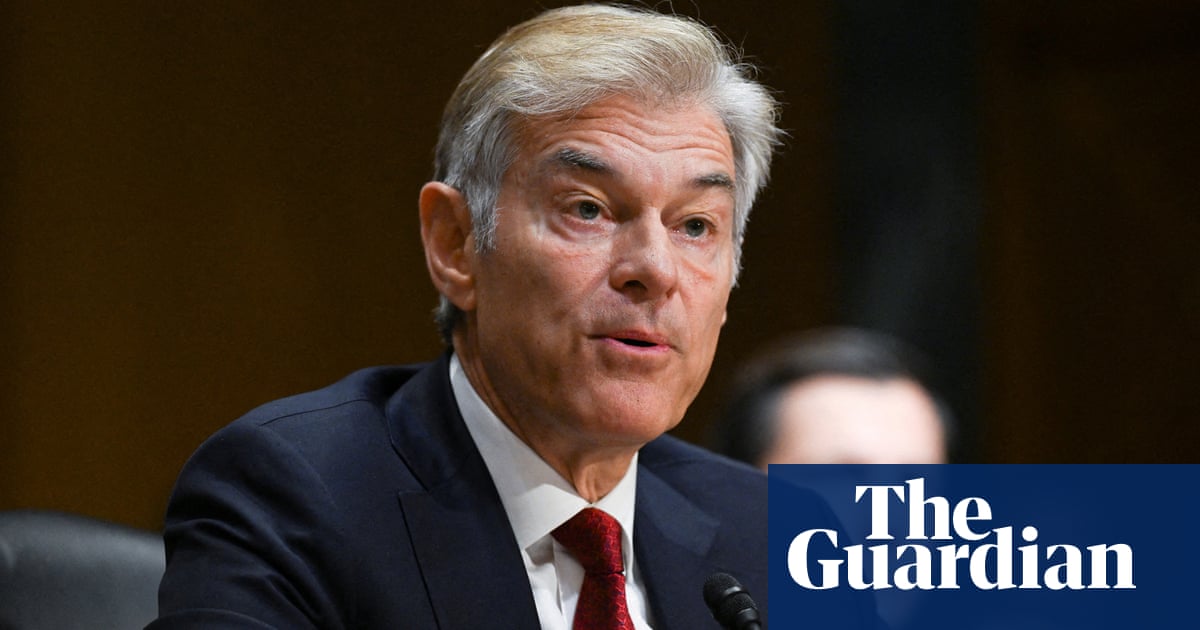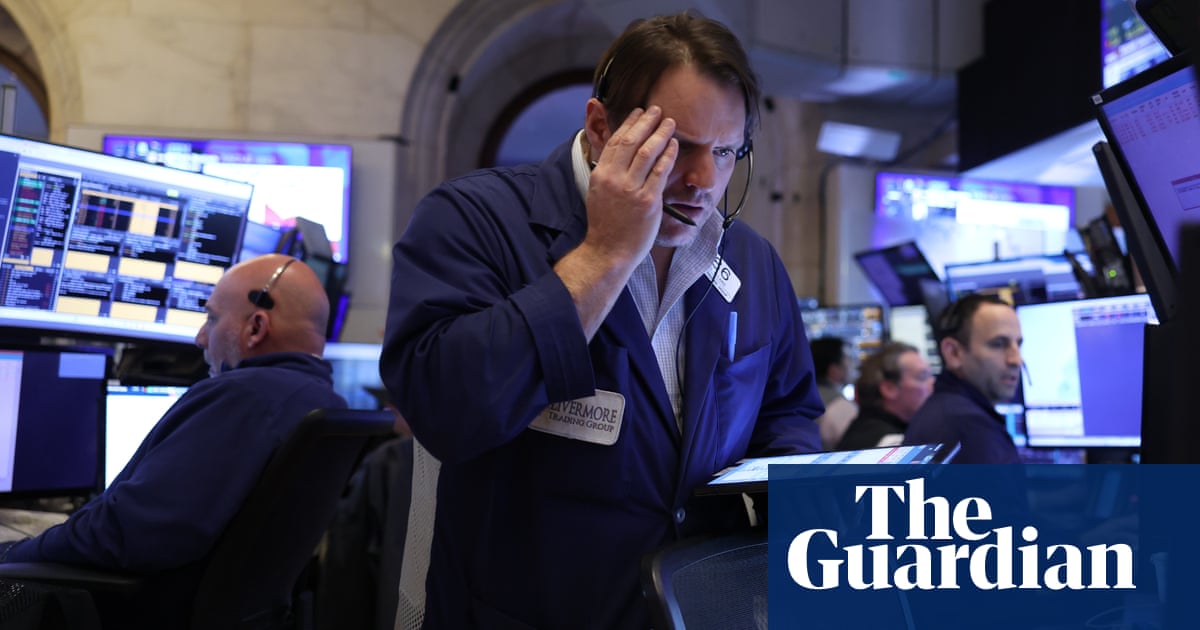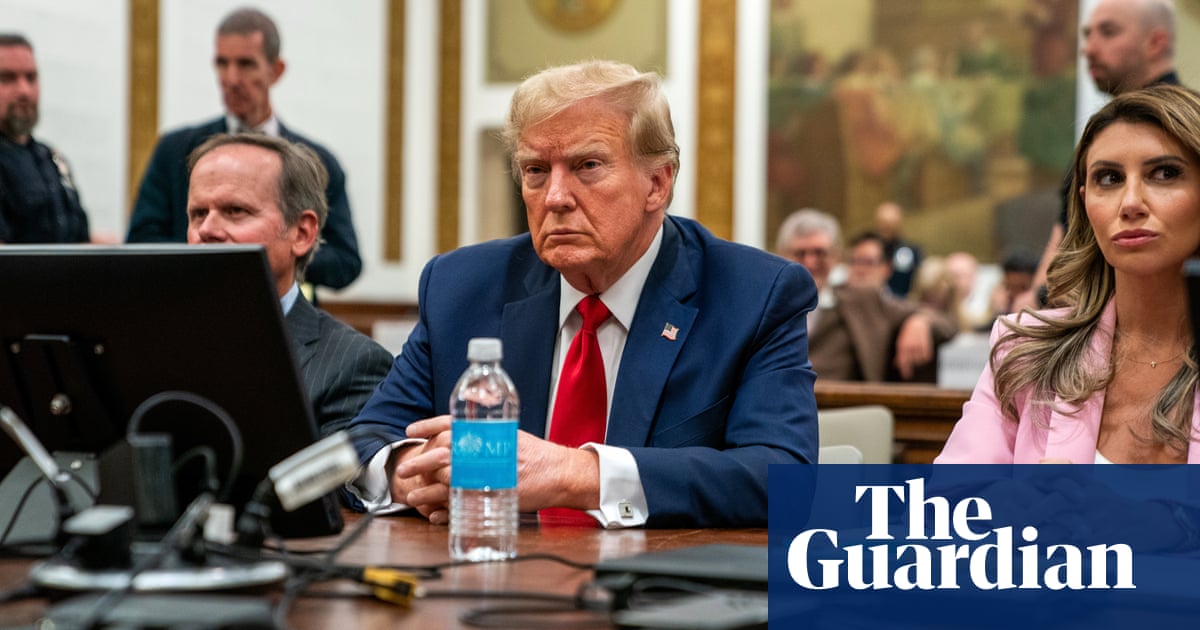Summary
If you’re just joining us, here’s a rundown of the latest developments:
-
US President Donald Trump has unveiled sweeping tariffs on some of the country’s largest trading partners. Trump said he would impose a 10% universal tariff on all imported foreign goods in addition to “reciprocal tariffs” ranging from 20% to more than 40% on dozens of countries.
-
China was hit with a 34% fee, in addition to a 20% tariff on all Chinese imports already in place, while the EU will now be levied at 20% and Japan at 24%. Trump said America had been “looted, pillaged and raped” by its trading partners: “In many cases, the friend is worse than the foe.”
-
The 10% universal tariff will go into effect on 5 April while the reciprocal tariffs will begin on 9 April.
-
Stocks dived after the announcement, with technology shares particularly hard hit, while the price of gold hit a record high as investors scrambled for safety. Japan’s Nikkei was down 2.8% on opening, Hong Kong’s Hang Seng Index slid 1.6%, South Korea’s Kospi fell 2% and Australian shares fell 2%.
-
US tariffs are a “major blow” to the world economy and the EU is preparing counter measures that will apply if negotiations fail, EU Commission chief Ursula von der Leyen has said. “The global economy will massively suffer, uncertainty will spiral and trigger the rise of further protectionism,” she said.
-
China’s commerce ministry called for Washington to “immediately cancel” the new tariffs, warning they “endanger global economic development” and would hurt US interests and international supply chains. It called for dialogue and added: “There is no winner in a trade war, and there is no way out for protectionism.”
-
War-torn and economically struggling countries are among those facing the highest tariffs. Myanmar, which is in the middle of a civil war and which was hit by an earthquake last week, was hit with a rate of 44%, while Sri Lanka is facing a 44% tariff and Lesotho a rate of 50%.
-
The tariffs also hit the Heard Island and McDonald Islands, a group of barren, uninhabited volcanic islands near Antarctica, which form an external territory of Australia, as well as Norfol Island, which said it had no known exports to the US. Albanese said on Thursday: “Norfolk Island has got a 29% tariff. I’m not quite sure that Norfolk Island, with respect to it, is a trade competitor with the giant economy of the United States, but that just shows and exemplifies the fact that nowhere on earth is safe from this.”
Key events Show key events only Please turn on JavaScript to use this feature
Bond yields fall as investors fear recession
While shares are sliding today, there’s a big rally into government bonds.
The prices of US Treasury bills, UK gilts, German bunds, and other eurozone government debt are all rallying today.
This is pulling down bond yields (the rate of return on the debt), with 10-year UK gilt yields down 6 basis points at 4.581%.
That might, superficially, sound like good news for finance ministers, as it shows new borrowing will be cheaper.
The problem, though, is that bond prices are rising/yields are falling as investors fear the global trade war will lead to a global recession, prompring interest rate cuts.
Kathleen Brooks, research director at XTB, says US trade policy has thrown “a grenade into the global economy”.
Brooks explains:
The bond market is a big winner.
Yields are falling sharply everywhere. The UK and European 2-year yields are lower, as the market rushes to price in rate cuts from the ECB and the BOE, as central banks are likely to step up to ease some of the pain from the US’s new global trade policy. 10-year yields are also lower, for example the 10-year Gilt yield in the UK is down 6bps so far on Thursday.
The UK yield curve is flattening, which is a sign that bond investors are pricing in the chance of a recession. US yields are also lower, but not by the same amount as Europe, suggesting that bond investors could be worried about the inflationary impact on the US economy.
US tariff calculations raise "serious concerns about policy credibility"

There’s some surprise this morning that the White House appears to have used a rather blunt tool to calculate its new reciprocal tariffs.
Last night, Donald Trump brandished a board showing (he claimed) the tariffs which other countries were charging on the US. The new US tariffs have been set at half that rate.
However, rather than in-depth calculations, US officials have invented a formula based on the size of each country’s trade surplus.
Basically, the White House has taken the US’s goods trade deficit with each country and then divided it by the total amount of goods imported from that country.
Deutsche Bank have crunched the numbers, and confirm:
Put simply, the bigger the nominal trade deficit a country has with the US adjusted for the absolute size of that country’s imports, the bigger the tariff.
The BBC’s Faisal Islam has posted the formula:
THREAD:
The so-called “reciprocal” tariff doesn’t reflect the tariffs charged elsewhere directly but essentially the size of a country’s trade surplus, which has been used as a proxy. The equation essentially is aimed at levying a fee that would get this surplus to zero. pic.twitter.com/ixft2c1RLj
Deutsche Bank say this approach to calculating the tariffs “raises serious concerns about policy credibility, undermining the USD [the dollar].”
They draw three conclusions:
First, the US administration is squarely focused on penalizing countries with larger trade deficits in goods (services are ignored). This determination is highly mechanical, rather than a sophisticated assessment of tariff and non-tariff barriers. It is also in line with the declaration of a national emergency on the trade deficit used as a legal justification for the tariffs.
Second, there is a very large disconnect between communication in recent weeks of an in-depth policy assessment of bilateral trade relationships with different countries versus the reality of the policy outcome. We worry this risks lowering the policy credibility of the administration on a forward-looking basis. The market may question the extent to which a sufficiently structured planning process for major economic decisions is taking place. After all, this is the biggest trade policy shift from the US in a century. Crucially, major additional fiscal decisions are lining up over the next two months.
Third, the tariff calculation approach arguably makes for a more free-wheeling and open-ended nature to potential trade negotiations in coming months. It seems there are no specific and identifiable policy asks per se but ultimately a desire to reduce bilateral trade imbalances.
Scottish whisky and salmon industries “disappointed” by Trump tariffs

Severin Carrell

The Scottish whisky and salmon industries are “disappointed” with President Trump’s decision to impose 10% tariffs on British imports but have backed Keir Starmer’s efforts to win concessions from the US.
The Scotch Whisky Association said:
“The industry is disappointed that Scotch whisky could be impacted by these tariffs. We welcome the intensive efforts by the UK government to reach a deal with the US administration, and we continue to support this measured and pragmatic approach towards a mutually beneficial resolution.”
Tavish Scott, chief executive of Salmon Scotland, said:
“We have great confidence that Americans will continue to buy nutritious Scottish salmon, particularly when the country is reliant on imports to meet US consumer demand.
“Salmon producers want a business-like and stable trade relationship with the USA, so we support the UK government’s efforts to achieve that outcome through a calm and measured approach.”
Both sectors rely very heavily on US sales, particularly at the luxury end of their markets. The US is their second largest foreign customer. Industry bodies had been briefed by UK government officials that Trump’s tariffs on the UK could hit 20% so are likely to be relieved they were half that.
Scotland exports around £4bn worth of goods to the US, with whisky nearly a quarter of that trade at £971m last year. The US also bought £225m worth of Scottish salmon, which is the UK’s largest global food export by value, in 2024.
The tariffs will hit US businesses which rely on whisky and salmon. Kentucky bourbon makers sell their used barrels to Scotland for malt whisky maturation, so a fall in sales could hit that. High end US restaurants use premium Scottish salmon, airfreighted in from the UK.
Economists have calculated that the US tariffs would hit their highest level in over a century if the measures announced by Donald Trump last night are implemented in full.
Capital Economics have calcualted that the effective tariff rate on all imports will rise from 2.3% last year to around 26%, leaving it at a 131-year high, once you add the new reciprocal tariffs to the earlier hikes on goods from China, and the product-specific tariffs on steel, aluminum and autos.
They told clients:
Stepping back, the main message from President Trump’s “Liberation Day” announcement was that US tariffs were increased by more than even we had anticipated. Since election day, we have built our forecasts on an assumed that the US would impose a tariff of 60% on imports from China and 10% on imports from all other countries. That would take the effective US tariff rate to around 17%.
Instead, the system of reciprocal tariffs that was announced, together with the additional product-specific tariffs that appear imminent, will take the effective US tariff rate to just under 25%.
That, according to this chart from Capital Economics, would take the effective tariff rate higher than under the infamous Smoot-Hawley Tariff Act of 1930.

The Smoot-Hawley Tariff Act was brought in early in the Great Depression, as a protectionist measure to help US companies. But it is generally accepted it worsened the slump, which followed the Great Crash of 1929, by weakening global trade.
As Dr Eric Golson, Associate Professor of Economics at the University of Surrey, recently explained:
History has shown that trade wars come with long-term economic pain. The Great Depression was exacerbated by an international tariff war, with global trade plummeting by 66% between 1929 and 1933, crippling American businesses and driving unemployment to catastrophic levels.
UBS have also calculated that the“US weighted average import tariff is back to pre-WW I levels”.
They told clients:
Combining all the tariffs, we believe the weighted average tariff for the US has increased to 24%, from just 2.5% at the start of the year, a 21.5pp increase, and equivalent to a $715bn increase in dollar terms.
Israeli finance minister Bezalel Smotrich has said he is convening ministry officials to formulate a course of action to protect Israel’s economy in the wake of President Donald Trump’s decision to impose tariffs on exports.
As part of a sweeping new tariff policy, Israeli goods exports to the United States will be subject to a 17% tariff.
Smotrich said he would discuss with ministry officials, after speaking with economic leaders, how to “analyse opportunities and risks and formulate courses of action, both in relation to President Trump and his team and regarding the necessary steps to strengthen Israel’s industry”.
Pharma’s tariff reprieve could be temporary
Pharmaceuticals companies are avoiding the sell-off this morning, after avoiding the tariffs announced last night.
The fact sheet issued by the White House last night explains:
-
Some goods will not be subject to the Reciprocal Tariff. These include: (1) articles subject to 50 USC 1702(b); (2) steel/aluminum articles and autos/auto parts already subject to Section 232 tariffs; (3) copper, pharmaceuticals, semiconductors, and lumber articles; (4) all articles that may become subject to future Section 232 tariffs; (5) bullion; and (6) energy and other certain minerals that are not available in the United States.
That has prompted a small relief rally; in London, GSK are up 1.5% while AstraZeneca has risen by 0.6%. Switzerland’s Novartis has gained 0.65%.
But this could be short-lived, as Trump might yet announce more sector-specific tariffs.
As Bloomberg explains:
The president is looking into launching a so-called 232 investigation into pharmaceuticals and other sectors, including semiconductors and potentially critical minerals, according to a senior administration official. That action could lead to tariffs under the Trade Expansion Act, as it already has for cars and aluminum.
Interest rate cuts look more likely
City investors are ratcheting up bets on interest rate cuts by major central banks, as policymakers try to fend off a global recession.
The money markets are now pricing in a 92% chance that the European Central Bank cuts eurozone interest rates at its meeting later this month, up from 80% on Wednesday.
The chances of a Bank of England rate cut in early May have also risen, to 77%.
Standard Chartered, the Asia-Pacific focused lender, are the biggest faller on the FTSE 100 this morning, down 7.5%
That reflect concerns that parts of Asia has been hit particularly hard by Trump’s new traade levies.
As ING analysts told clients:
President Trump’s punitive tariffs hit Asia, with largest levies on Vietnam and smaller textile exporters. The largest economies in the region, such as India, Japan, and South Korea, fared better.
Overall, downside risks to growth and inflation could accelerate monetary policy easing and add to depreciation pressures on currencies.
European markets join the rout
European stocks have joined the global sell-off with gusto.
The pan-European Stoxx 600 index has fallen 1.5% at the start of trading, to its lowest level in over two months.
Germany’s DAX fell almost 2.5% at the start of tading in Frankfurt, while in Paris the CAC 40 is down 2.2% and Spain’s IBEX lost 1.5%.
Roman Ziruk, senior market analyst at global financial services firm Ebury, says:
“Trump’s “Liberation Day” announcements landed at the very negative end of market expectations, with the average tariff rate rising to over 20% from just 2.5% before Trump took office, the highest level since the early 20th century.
“Asian countries were hit the hardest, with some seeing punishing reciprocal tariffs of over 40% and China being hit with a massive 34% levy on top of the 20% already imposed since the start of Trump’s second term.
“On the other side of the spectrum are the UK and major Latin American countries, which were slapped with at most a 10% duty, with the EU in the middle at 20%.
FTSE 100 tumbles at the start of trading
Shares are falling in London at the start of trading, as City investors react to the swathe of tariffs announced by Donald Trump last night.
The FTSE 100 index of blue chip shares has plunged by almost 1.5% at the start of trading, down 125 points at 8481 points.
Mining companies such as Anglo American (-4.7%) and Antofagasta (-4.6%) are among the big fallers, along with banks such as Barclays (-4.1%) and HSBC (-3.5%).
That reflects fears that a trade war increases the risk of a global downturn, leading to more bad debt and less demand for commodities.
Daniel Murray, Deputy CIO & Global Head of Research at EFG, the Zurich-based global private banking group, says:
“The risk of a US and global recession has increased directly as a result of the US tariffs, as has the likelihood that inflation stays higher for longer. In turn, the possibility of stagflation makes life very difficult for central banks.”
Murray adds that the next few months are therefore likely to be volatile:
as (a) the tariffs starts to impact the global activity and inflation (b) other countries impose retaliatory measures on the US, potentially stoking a long drawn out phase of deglobalisation (c) the international political order re-aligns and countries reassess the nature of their relationship with the US, not just with regard to trade but more broadly including the implications for defence and the existing world order.
Starmer: our decisions will be guided by the national interest
UK prime minister Sir Keir Starmer has told business chiefs in Downing Street:
“Last night the President of the United States acted for his country, and that is his mandate.
“Today, I will act in Britain’s interests with mine.”
PA Media reports that Sir Keir said as the Government moved “to the next stage of our plan”, the “decisions we take in coming days and weeks will be guided only by our national interest, in the interests of our economy, in the interests of businesses around this table, in the interests of putting money in the pockets of working people”.
He added:
“Nothing else will guide me, that is my focus.
“Clearly, there will be an economic impact from the decisions the US has taken, both here and globally.
“But I want to be crystal clear: we are prepared, indeed one of the great strengths of this nation is our ability to keep a cool head.”
European stock markets are set to join the global selloff in around 20 minutes when trading opens.
The futures markets are indicating that the EuroSTOXX50, which tracks the largest fifty listed companies in the eurozone, will drop around 1.8%.
Shares are also forecast to slide in London, where FTSE 100 futures are currently down around 1%.
Wall Street is also heading for a chilly bath – S&P 500 futures were down 3% last night.
The mood is highly anxious, as Susannah Streeter, head of money and markets at Hargreaves Lansdown, reports:
‘’A brutal round of trade top Trumps is sending a shiver through global markets. As threats have turned into facts, the plan for blanket tariffs on US trading partners has unnerved investors. As Trump has ripped up trade norms, it’s spread fresh worries about the implication for the global economy. Futures trades indicate a sharp fall for the S&P 500 with other indices around the world looking set to follow suit.
A baseline 10% tariff is the starting point, with 20% tariffs set to land on imports from the EU, and much steeper duties imposed on countries in Asia with China facing 34% duties. There will also be 25% tariffs slapped on foreign made cars sold in the US.
Jonathan Reynolds: tariffs are a disappointment
British business minister Jonathan Reynolds has warned the tariffs announced by Donald Trump last night is a threat to the UK, because of the damage it will cause to global trade.
Speaking to Times Radio this morning, Reynolds explained that anything that disrupts the global trading system is a threat to the UK.
And even though the UK was hit with a smaller tariff than many other countries – 10%, rather than the EU’s 20% - Reynolds said he was “disappointed” to be tariffed at all.
He said:
Any barrier to trade, particularly between the UK and our major trading partner, which the US is, is a disappointment to me. It’s a challenge.
“So, I recognise that the UK is in a better position than a lot of other countries from what was announced last night, but I was still disappointed.”
Reynolds said the UK should ignore calls to trigger a larger trade war by retaliating. Instead, he said the British government woud stay calm and to talk to the US, and continue the work towards reaching an economic deal.
Pound hits $1.31 as dollar weakens
With the dollar sliding on the international markets, the British pound has hit its highest since last October.
Sterling has gained almost one cent so far today, touching $1.31 for the first time since last October.
The euro is up almost a cent too, at $1.095, as the dollar suffers a post-Liberation Day hangover.
Michael Brown, senior research strategist at Pepperstone, says financial market participants “view the dollar not as a haven, but as the asset most exposed to the utter incoherence and nonsense emanating from the White House.”
Norway – which is not an EU member – has said it will seek to negotiate with the US regarding the 15% tariff imposed on it.
“This is bad news, it is very serious,” prime minister Jonas Gahr Støere told public broadcaster NRK. He added:
There is an opening for negotiations here, the Americans say, and we will use that in every possible way that we can.
António Costa, president of the European Council, has said the EU will remain a “staunch advocate for free and fair trade” and urged the bloc to move forward with trade deals with South America, Mexico and India. In a post on X he said:
Trade is a powerful engine of global prosperity. The EU will remain a staunch advocate for free and fair trade.
We will engage with all our partners and continue to strengthen and expand our trade network. Now is the time to move forward with the agreements with #Mercosur, #Mexico and decisively advance in the negotiations with #India and other key partners.
Thailand, which was hit with tariffs of 36%, has said its exporters should seek new markets, adding that it had prepared “mitigation measures” to support those who rely mainly on the US.
The US is the country’s largest export market, with the country exporting electronics, machinery and agricultural goods.
In its statement, the Thai government said it understood the US’s wish to “rebalance trade relationships” and that it had “expressed its readiness to engage in dialogue with the United States at the earliest opportunity to achieve a fair trade balance”.
Summary
If you’re just joining us, here’s a rundown of the latest developments:
-
US President Donald Trump has unveiled sweeping tariffs on some of the country’s largest trading partners. Trump said he would impose a 10% universal tariff on all imported foreign goods in addition to “reciprocal tariffs” ranging from 20% to more than 40% on dozens of countries.
-
China was hit with a 34% fee, in addition to a 20% tariff on all Chinese imports already in place, while the EU will now be levied at 20% and Japan at 24%. Trump said America had been “looted, pillaged and raped” by its trading partners: “In many cases, the friend is worse than the foe.”
-
The 10% universal tariff will go into effect on 5 April while the reciprocal tariffs will begin on 9 April.
-
Stocks dived after the announcement, with technology shares particularly hard hit, while the price of gold hit a record high as investors scrambled for safety. Japan’s Nikkei was down 2.8% on opening, Hong Kong’s Hang Seng Index slid 1.6%, South Korea’s Kospi fell 2% and Australian shares fell 2%.
-
US tariffs are a “major blow” to the world economy and the EU is preparing counter measures that will apply if negotiations fail, EU Commission chief Ursula von der Leyen has said. “The global economy will massively suffer, uncertainty will spiral and trigger the rise of further protectionism,” she said.
-
China’s commerce ministry called for Washington to “immediately cancel” the new tariffs, warning they “endanger global economic development” and would hurt US interests and international supply chains. It called for dialogue and added: “There is no winner in a trade war, and there is no way out for protectionism.”
-
War-torn and economically struggling countries are among those facing the highest tariffs. Myanmar, which is in the middle of a civil war and which was hit by an earthquake last week, was hit with a rate of 44%, while Sri Lanka is facing a 44% tariff and Lesotho a rate of 50%.
-
The tariffs also hit the Heard Island and McDonald Islands, a group of barren, uninhabited volcanic islands near Antarctica, which form an external territory of Australia, as well as Norfol Island, which said it had no known exports to the US. Albanese said on Thursday: “Norfolk Island has got a 29% tariff. I’m not quite sure that Norfolk Island, with respect to it, is a trade competitor with the giant economy of the United States, but that just shows and exemplifies the fact that nowhere on earth is safe from this.”
How did the Trump White House calculate the tariffs?
Many people have been asking how the Trump administration worked out its tariffs, while many countries have been arguing the numbers bear no relationship with reality.
New Zealand’s trade minister insisted his country did not apply a 20% tariff to US imports, as suggested by Washington, while Australia’s prime minister, Anthony Albanese, insisted the US tariffs had “no basis in logic” and that “a reciprocal tariff would be zero, not 10%.”
One journalist claims to have discovered the answer, and analysts are suggesting he is likely correct.
“They didn’t actually calculate tariff rates + non-tariff barriers, as they say they did. Instead, for every country, they just took our trade deficit with that country and divided it by the country’s exports to us,” financial writer James Surowiecki wrote in a post on X.
“So we have a $17.9 billion trade deficit with Indonesia. Its exports to us are $28 billion. $17.9/$28 = 64%, which Trump claims is the tariff rate Indonesia charges us.”
Then that number was divided in half as Trump said he was being “kind”. He also said the tariff calculations included “currency manipulation and trade barriers”.
An explanation of the calculations later posted on the office of the US trade representative appeared to confirm that the administration had used trade deficits divided by imports.
Mike O’Rourke, chief marketing strategist at Jones Trading, was quoted by CNN as saying:
While these new tariff measures have been framed as ‘reciprocal’ tariffs, it turns out the policy is actually one of surplus targeting ...
There does not appear to have been any tariffs used in the calculation of the rate. The Trump administration is specifically targeting nations with large trade surpluses with the United States relative to their exports to the United States.

.png) 19 hours ago
5
19 hours ago
5
